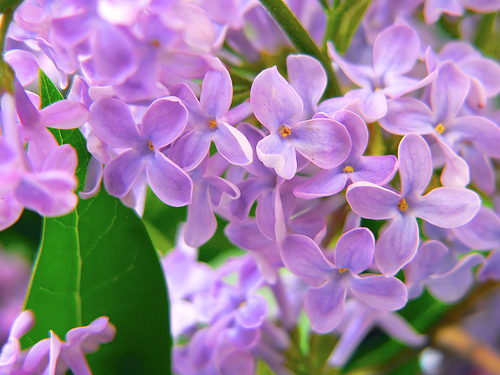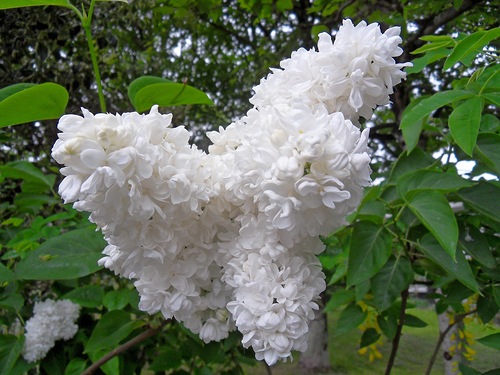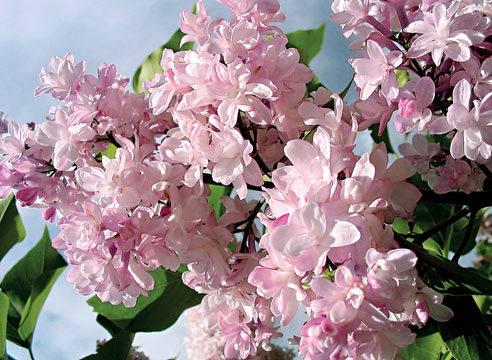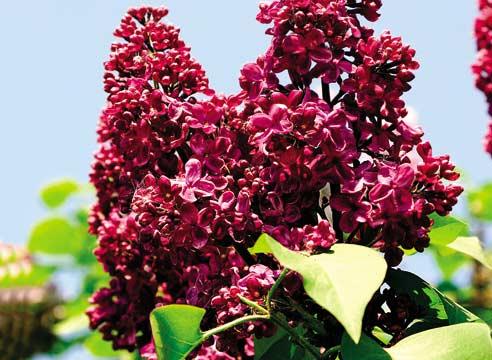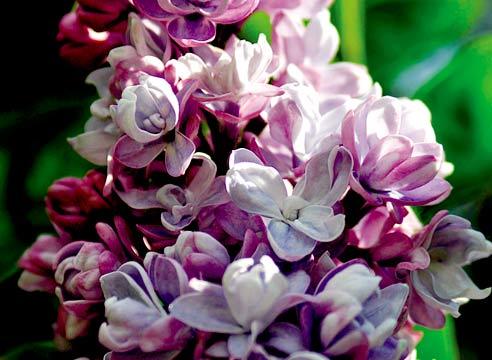With the arrangement of the green zone on the site near his own home, one of the main tasks is to correctly choose the species row of plants. Many gardeners certainly are planted with lilac, since the magnificent color of this plants and the thick juicy greenery of foliage make it easy to reflect and increase the attractiveness of the entire landscape zone. The current number of varieties allows to combine very beneficial with any other plants and eliminates the occurrence of any difficulties in the process of care.
Content
What are the advantages of landing lilac on their own site?
If you decide to give preference to the content of lilac bushes, make sure that your decision is correct, viewing the list of the most important advantages of this plant:
- The beauty of the shape of the entire shrub and its colors, which will significantly refresh the landscape of any site.
- The ability to choose a color scheme that will most harmoniously combine with plants of other landscaped forms and the architecture of the house itself.
- Simplicity of landing shrubs.
- Unique fragrance.
- Minor time spent on lilac care.
Important! Despite the fact that this plant is quite unpretentious, before purchasing seedlings and their disembarking, be sure to familiarize yourself with the basic rules for the implementation of this work, in order to make the most interestingly to issue all of the household territory.
What variety to choose?
Given the fact that the flower lilac is not only natural, but also artificial hybrid origin, the variety of varieties amazes today. The population has up to 2 thousand species.
Criterias of choice
When choosing grades, focus on the following criteria:
Varieties of lilac
Of all the available options, several varieties are particularly popular for the arrangement of private territory:
- Ordinary lilac. This group is represented by 500 varieties. The color palette covers white and all shades of purple. Flowering after landing occurs for 4 years.

Important! If you decide to give preference to this type of lilac, landing and care for which will not differ from other varieties, pay attention to the variety Primrose is the only one of its kind with a yellow tinge of inflorescence.

- Terry. This species is distinguished by double inflorescences, that is, one more flower grows one more. This gives greater pomp with all shrubs.

- Hungarian. This kind, preference with not very favorable climatic conditions. Such a lilac does not lose its attractiveness in any drought, nor with excessive moisture. In addition, it perfectly tolerates strong frosts. Petals of this type are sharp, and the brush of inflorescences germinate tiers.

Important! It is often blossoming for several weeks later than usual, therefore, with a competent combination of growing lilac, you can easily provide a long picture of beautiful shrubs in the country.

- Amur. These shrubs are beneficially distinguished by a sufficient height - up to 10 meters, which is ideal for the arrangement of a living hedge or the facade of the walls of the house. Flowers of this type of lilac are small, but gestrome gesture. An important condition for the full development of such shrubs is fertile soil. Under this rule, the Amur Lilac will easily transfer any temperature regime drops.

Important! This lilac blooms at the end of July, which is sure to take into account when combining varieties when landing.

- Persian. This species is characterized by smaller colors than an ordinary lilac, but at the same time the inflorescences themselves are more dense and dense. The height of such shrubs usually does not exceed 3 meters, which must be taken into account when it is located on the plot.

Important! The period of flowering of Persian lilac occurs for a couple of weeks later than the varieties of ordinary, but its duration is much larger.

- Lilac hybrid. Hybrid species are characterized by higher quality of many shrubs development indicators:
- lack of root row;
- earlier or later flowering;
- accelerated growth rates;
- lilac seedlings are better leaving.

Popular varieties of lilac
When choosing a variety in accordance with the tint, pay attention to the following options for the best varieties in each category:
- White shade with conventional inflorescences:
- White shade with double flowers:
- Dark color with simple shape buds:
- Shrubs with terry dark flowers:
- The best varieties of mid-tones - bluish and pinkish flowers, buds simple form:
- The same shades of lilac terry represented by the following varieties:
- When choosing a late hybrid lilac groups give preference to varieties of the following options:
When to plant lilacs?
In our band of climate conditions, the most suitable time for planting lilacs limited to the period from mid-August to early September. This approach greatly reduces the risk of death of the plant in cold weather as well as the lack of vegetation and flowering lilac characteristic at this time, in combination with a stable warm weather allows you to quickly take root seedlings. 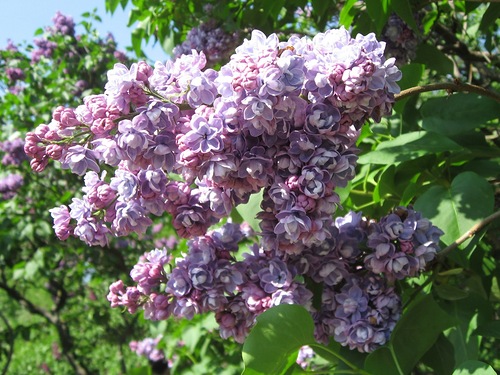
Important! Pay attention to the behavior of the shrub after planting. If foliage immediately crumbled, you have landed too late. In this case, be sure to perform mulching around-trunk circle using sawdust, leaves and peat to prevent freezing of the root system at a time when it is not yet fully matured in new soil.
How to choose a place to land?
Despite the simplicity of this plant, still pay attention to some of the requirements in choosing the best place for growing lilac:
- Prefer an open area with sufficient access to sunlight.
- Select the area that is not blown constant drafts.
- Follow planting lilacs on level ground or on a small gentle slope.

Important! Given the peculiarities of the development of the bush, a rational decision will design landscaping lilac following forms:
- great beds, especially interesting is the lilac in combination with conifers;
- hedges as the contour plot, and during its entire area by zoning;
- arrangement of pavilions;
- decorating the walls of the house.
What type of soil is suitable for planting lilacs?
With regard to the composition of the soil, there are very specific requirements:
- Not suitable clay soil.
- Excluded planting lilacs in wetlands or permanent stagnation of excessive moisture.
- If the soil is distinguished by increased acidity, it is possible to land lilac, but only with additional processing of the Earth to Dolomite flour or lime.
- The depth of groundwater is at least 1.5 meters.

Rules landing
Perform all landing works as follows:
- Buy seedlings with a closed root system to ensure good hits of shrubs.
- For landing Choose a cloudy day or late evening.
- Determine the locations of the seedlings, adhering to the following distances:
- Drop in the intended places of the pit, the sizes of which determine, based on the level of fertility of the soil:
- Put the wood ash, manure or compost, bone flour inside each pit.
- Set lilac seedlings in the pit in such a way that the root neck is directly in the ground with the surface of the Earth.

Important! If you prefer the grafted seedlings, install the shrub so that the root neck is towers above the ground level by 2-3 cm.
- Pull all the yams with soil, slightly tamper.
- Abundantly pour all places to landing.
- Make mulching any available material.

Video
View the video in which the process of landing shrubs of lilac is clearly shown, as well as one of the ways to pruning it.
How to care for lilac?
Lilac care rules do not differ in particular difficulty, mainly adhere to those requirements as when growing other shrubs:
- Each autumn jump the ground to a depth of 10-12 cm, directly near the cervix - only 5-7 cm.
Important! Perform this job carefully not to damage the root system.

- Perform regular watering only during flowering.
Important! After the end of blossom, approximately from the middle of July, do not water shrubs so as not to provoke the formation of new kidneys.

- All irrigation work spend early in the morning or evening after sunset.
Important! Calculation of water consumption Make taking into account the required quantity for each shrub in 10 liters.

- Fertilizer Perform once every 2-3 years with the following compositions:
- Immediately after flowering cut all the brush inflorescences.
- Decorative shrub molding in the spring, but before the swelling swelling.
- When solving independently multiply lilac, select the most convenient way of possible options:
Conclusion
When decorating the local territory with lilac, take a very carefully to choose a variety. It is from this to the greater the subsequent attractiveness of plants and the entire landscape will be dependent. In compliance with the rest of the simple rules for planting and care, problems with the development of shrubs will not arise, and you will not have to re-engage in the organization of the entire space of the site or carry out tedious long rehabilitation procedures.




